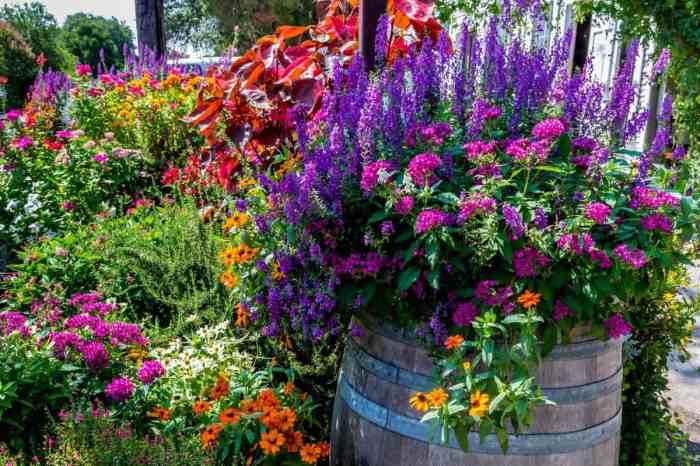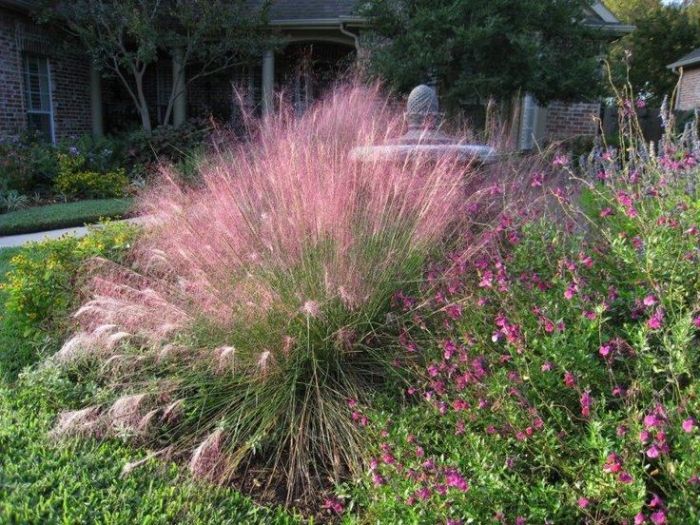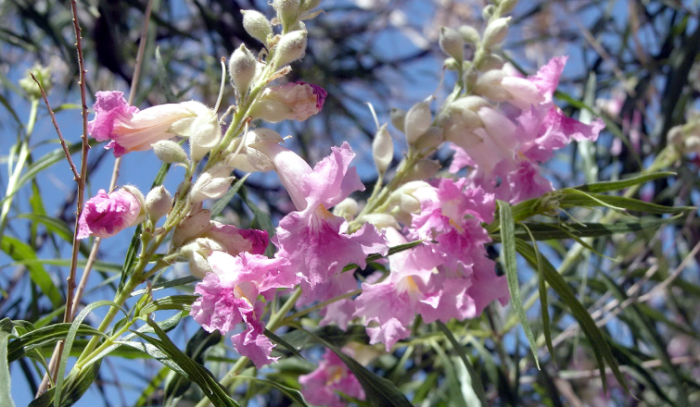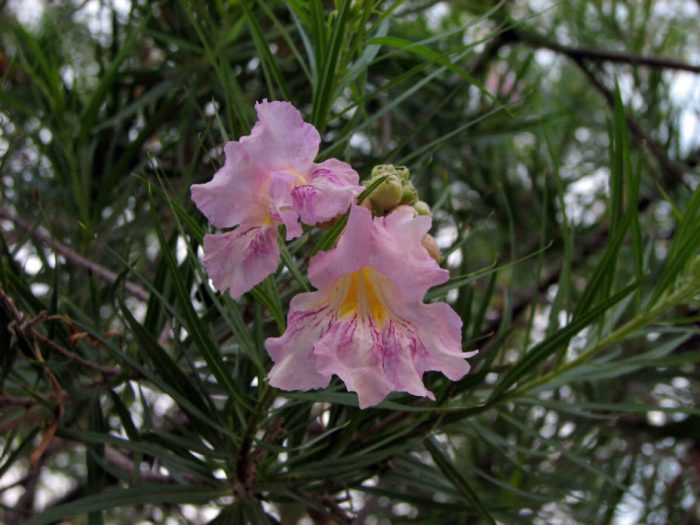Best plants for austin tx – Unveiling the best plants for Austin, TX, this guide delves into the vibrant world of flora that thrives in the heart of Texas. From native species to drought-tolerant wonders, shade-loving gems to edible delights, this comprehensive exploration unveils the perfect plants for your Austin oasis.
Austin’s unique climate and diverse landscapes demand a thoughtful approach to gardening. This guide provides an in-depth understanding of the region’s plant life, empowering you to create a thriving outdoor space that reflects the beauty and resilience of Austin.
Native Plants for Austin TX

Austin, Texas, is home to a diverse range of native plants that are well-adapted to the local climate and provide numerous benefits to the ecosystem. These plants have evolved over time to thrive in the region’s unique soil conditions, rainfall patterns, and temperature fluctuations.
Native plants play a crucial role in maintaining the ecological balance of the area. They provide food and shelter for native wildlife, support pollinators, and contribute to soil health. By incorporating native plants into landscapes, homeowners and businesses can promote biodiversity, reduce water consumption, and enhance the overall sustainability of the region.
When selecting the best plants for Austin, Texas, consider those that not only enhance your landscape but also contribute to erosion control. Explore best plants erosion control options to stabilize slopes, prevent soil loss, and create a sustainable ecosystem in your Austin garden.
By incorporating these resilient plants, you can safeguard your property from erosion while beautifying your outdoor space with the best plants for Austin, Texas.
Examples of Native Plants for Austin TX
- Texas Mountain Laurel (Sophora secundiflora):A small evergreen tree or shrub with showy clusters of purple flowers in the spring. It is drought-tolerant and attracts hummingbirds and butterflies.
- Live Oak (Quercus virginiana):A large, stately tree with evergreen leaves and acorns that provide food for wildlife. It is long-lived and provides shade.
- Yaupon Holly (Ilex vomitoria):A small evergreen shrub with glossy leaves and red berries that attract birds. It is drought-tolerant and can be used for hedges or screening.
- Prickly Pear Cactus (Opuntia engelmannii):A low-growing cactus with flat, oval pads and bright yellow flowers. It is drought-tolerant and provides food for wildlife.
- Bluebonnet (Lupinus texensis):A herbaceous wildflower with blue or purple flowers that bloom in the spring. It is a symbol of Texas and is important for pollinators.
Drought-Tolerant Plants for Austin TX
Austin, TX, experiences a humid subtropical climate with hot, dry summers and mild, wet winters. During the summer months, temperatures can reach over 100°F, and rainfall is scarce. As a result, it’s essential to choose drought-tolerant plants for your Austin landscape.
Drought-tolerant plants have adapted to survive in dry conditions. They typically have deep roots that can reach water deep in the soil, and their leaves are often thick and waxy to reduce water loss through evaporation. Drought-tolerant plants also tend to have a low water requirement, making them an excellent choice for water-conscious gardeners.
Low-Maintenance Drought-Tolerant Plants
- Yaupon Holly (Ilex vomitoria):A native evergreen shrub that produces small, white flowers in the spring and black berries in the fall. It is drought-tolerant and can grow in full sun or partial shade.
- Texas Mountain Laurel (Sophora secundiflora):A deciduous shrub or small tree with fragrant, lavender flowers that bloom in the spring. It is drought-tolerant and can grow in full sun or partial shade.
- Texas Sage (Leucophyllum frutescens):An evergreen shrub with silvery-green leaves and purple flowers that bloom in the spring and summer. It is drought-tolerant and can grow in full sun or partial shade.
- Zexmenia (Wedelia texana):A perennial groundcover with yellow flowers that bloom in the summer. It is drought-tolerant and can grow in full sun or partial shade.
- Firecracker Plant (Russelia equisetiformis):A perennial shrub with red flowers that bloom in the summer and fall. It is drought-tolerant and can grow in full sun or partial shade.
Shade-Loving Plants for Austin TX

Growing plants in shady areas of Austin, TX can be challenging due to the limited sunlight available. However, there are several shade-loving plants that can thrive in these conditions.
These plants have adapted to low light conditions by developing large leaves that can capture more sunlight, and by producing chlorophyll more efficiently. Some shade-loving plants also have shallow root systems that allow them to absorb nutrients from the soil more easily.
Examples of Shade-Loving Plants for Austin TX
- Hostasare a popular choice for shady gardens because they are easy to grow and come in a variety of sizes and colors. Hostas have large, heart-shaped leaves that can tolerate full shade to partial sun.
- Fernsare another good option for shady gardens. Ferns have delicate, feathery leaves that add a touch of elegance to any space. Ferns prefer moist, well-drained soil and can tolerate full shade to partial sun.
- Astilbesare a type of flowering plant that blooms in the summer. Astilbes have tall, graceful spikes of flowers that come in a variety of colors, including pink, white, and purple. Astilbes prefer moist, well-drained soil and can tolerate full shade to partial sun.
Flowering Plants for Austin TX
Austin, TX, is a vibrant city with a rich and diverse flora. Flowering plants are a major part of this beauty, adding color and fragrance to the city’s landscape throughout the year.
From the vibrant hues of spring wildflowers to the delicate blooms of fall, there is always something in bloom in Austin. The city’s Mediterranean climate provides ideal conditions for a wide range of flowering plants, from native species to exotic imports.
Perennial Flowering Plants
Perennial flowering plants are those that live for more than two years. They are a great choice for Austin gardens because they will come back year after year with minimal care.
Austin, TX, with its unique climate, demands specific plants that can thrive in its hot, dry conditions. While there are numerous options, it’s essential to consider the best plants for the region. For a comprehensive guide to choosing the right plants for Austin, refer to best plants . This resource provides valuable information on selecting the most suitable plants for Austin’s climate, ensuring a vibrant and thriving outdoor space.
- Texas Bluebonnet( Lupinus texensis): This iconic Texas wildflower is a beautiful addition to any garden. It produces clusters of blue flowers in the spring.
- Indian Blanket( Gaillardia pulchella): This native plant produces daisy-like flowers in shades of red, orange, and yellow. It is drought-tolerant and attracts butterflies.
- Salvia( Salviaspp.): Salvias are a large genus of flowering plants that includes many popular garden varieties. They produce spikes of flowers in a wide range of colors, including blue, purple, pink, and red.
Annual Flowering Plants
Annual flowering plants are those that complete their life cycle in one year. They are a great choice for adding quick color to your garden.
- Petunia( Petuniaspp.): Petunias are popular bedding plants that produce masses of flowers in a wide range of colors. They are heat-tolerant and easy to grow.
- Marigold( Tagetesspp.): Marigolds are another popular bedding plant that produces bright yellow or orange flowers. They are also heat-tolerant and easy to grow.
- Zinnia( Zinniaspp.): Zinnias are a beautiful addition to any garden. They produce large, daisy-like flowers in a wide range of colors.
Fragrant Flowering Plants
Fragrant flowering plants add a touch of sweetness to the air. They are a great choice for planting near patios or walkways.
- Night-Blooming Jasmine( Cestrum nocturnum): This plant produces clusters of white flowers that release a sweet fragrance at night.
- Gardenia( Gardenia jasminoides): Gardenias are known for their large, white flowers that produce a sweet, heady fragrance.
- Honeysuckle( Loniceraspp.): Honeysuckle vines produce clusters of fragrant flowers in a variety of colors, including white, pink, and yellow.
Edible Plants for Austin TX: Best Plants For Austin Tx

Growing edible plants in Austin, TX, offers numerous benefits. Not only does it provide access to fresh, nutritious produce, but it also promotes sustainability and connects individuals with the natural world. Austin’s climate is ideal for cultivating various edible plants, allowing gardeners to enjoy a diverse and bountiful harvest throughout the year.
For those seeking the best plants for their Austin abodes, the Texas sun can pose a challenge. Consider exploring shade-loving varieties that thrive in the region. From ferns and hostas to azaleas and hydrangeas, there are numerous options to choose from.
For further inspiration, refer to our comprehensive guide on best plants for Texas shade . Once you’ve selected the perfect shade-loving plants, you’ll be well on your way to creating a thriving and vibrant outdoor oasis in Austin.
This article explores the nutritional value, growth habits, and harvesting tips of some of the most popular edible plants that thrive in Austin’s climate. Whether you’re a seasoned gardener or just starting, this guide will empower you to cultivate a thriving edible garden that nourishes both your body and soul.
Herbs
Herbs are a versatile group of edible plants that add flavor and aroma to dishes while providing an array of health benefits. Some of the most popular herbs for Austin gardens include basil, cilantro, mint, oregano, rosemary, and thyme. These herbs are relatively easy to grow and can be cultivated in containers, raised beds, or directly in the ground.
They require well-drained soil, regular watering, and plenty of sunlight.
- Basil: Basil is a tender annual herb known for its sweet, fragrant leaves. It is rich in antioxidants and has anti-inflammatory properties. Basil thrives in warm, sunny locations and requires consistent moisture.
- Cilantro: Cilantro is a cool-season herb with a distinct, citrusy flavor. It is a good source of vitamins A and C and contains essential oils with antimicrobial properties. Cilantro prefers partial shade and well-drained soil.
- Mint: Mint is a perennial herb with invasive growth habits. It is highly aromatic and has a refreshing, cooling flavor. Mint is a good source of antioxidants and has calming properties. It prefers moist, shady areas and can be grown in containers or directly in the ground.
- Oregano: Oregano is a hardy perennial herb with a warm, earthy flavor. It is rich in antioxidants and has antimicrobial properties. Oregano prefers well-drained soil and full sun to partial shade.
- Rosemary: Rosemary is an evergreen shrub with aromatic, needle-like leaves. It is a good source of antioxidants and has anti-inflammatory properties. Rosemary prefers well-drained soil and full sun to partial shade.
- Thyme: Thyme is a low-growing perennial herb with a pungent, earthy flavor. It is a good source of antioxidants and has antibacterial properties. Thyme prefers well-drained soil and full sun to partial shade.
Vegetables, Best plants for austin tx
Austin’s climate allows for the cultivation of a wide range of vegetables, from leafy greens to root vegetables. Some of the most popular vegetables for Austin gardens include tomatoes, peppers, cucumbers, squash, beans, and carrots. These vegetables require well-drained soil, regular watering, and plenty of sunlight.
- Tomatoes: Tomatoes are warm-season vegetables that thrive in full sun. They are a good source of vitamins A and C, as well as lycopene, an antioxidant with potential health benefits. Tomatoes require well-drained soil and regular watering.
- Peppers: Peppers are warm-season vegetables that come in a variety of shapes, sizes, and colors. They are a good source of vitamins A and C, as well as capsaicin, a compound that gives peppers their spicy flavor. Peppers prefer well-drained soil and full sun.
- Cucumbers: Cucumbers are cool-season vegetables that prefer partial shade. They are a good source of hydration and contain essential minerals. Cucumbers require well-drained soil and regular watering.
- Squash: Squash is a warm-season vegetable that comes in a variety of shapes and sizes. They are a good source of vitamins A and C, as well as fiber. Squash prefers well-drained soil and full sun.
- Beans: Beans are warm-season vegetables that come in a variety of types, including green beans, black beans, and kidney beans. They are a good source of protein, fiber, and vitamins. Beans prefer well-drained soil and full sun.
- Carrots: Carrots are cool-season vegetables that prefer loose, well-drained soil. They are a good source of vitamins A and K, as well as beta-carotene, an antioxidant that gives carrots their orange color. Carrots require regular watering and full sun to partial shade.
Fruits
Austin’s climate is suitable for growing a variety of fruits, including berries, citrus fruits, and stone fruits. Some of the most popular fruits for Austin gardens include strawberries, blueberries, blackberries, oranges, grapefruit, and peaches. These fruits require well-drained soil, regular watering, and plenty of sunlight.
- Strawberries: Strawberries are perennial fruits that produce runners and spread over time. They are a good source of vitamin C and antioxidants. Strawberries prefer well-drained soil and full sun to partial shade.
- Blueberries: Blueberries are deciduous shrubs that produce sweet, juicy berries. They are a good source of antioxidants and have anti-inflammatory properties. Blueberries prefer acidic, well-drained soil and full sun to partial shade.
- Blackberries: Blackberries are deciduous shrubs that produce tart, flavorful berries. They are a good source of vitamins C and K, as well as antioxidants. Blackberries prefer well-drained soil and full sun to partial shade.
- Oranges: Oranges are evergreen trees that produce sweet, juicy fruit. They are a good source of vitamin C and antioxidants. Oranges prefer well-drained soil and full sun.
- Grapefruit: Grapefruit are evergreen trees that produce tart, juicy fruit. They are a good source of vitamin C and antioxidants. Grapefruit prefer well-drained soil and full sun.
- Peaches: Peaches are deciduous trees that produce sweet, fuzzy fruit. They are a good source of vitamins A and C, as well as fiber. Peaches prefer well-drained soil and full sun.
Final Conclusion

Whether you seek to enhance your landscape with native flora, conserve water with drought-tolerant varieties, brighten shady areas with vibrant blooms, or savor the fruits of your labor with edible plants, this guide has it all. Embrace the horticultural wonders of Austin, TX, and transform your garden into a sanctuary of beauty and sustainability.
Question & Answer Hub
What are the benefits of choosing native plants for Austin, TX?
Native plants are adapted to the local climate and soil conditions, requiring less water and maintenance. They also support local wildlife and promote biodiversity.
How can I reduce water consumption in my Austin garden?
Opt for drought-tolerant plants, utilize mulch to retain moisture, and consider rainwater harvesting systems.
What are some shade-tolerant plants that will thrive in my Austin garden?
Hostas, ferns, begonias, and impatiens are excellent choices for shady areas.